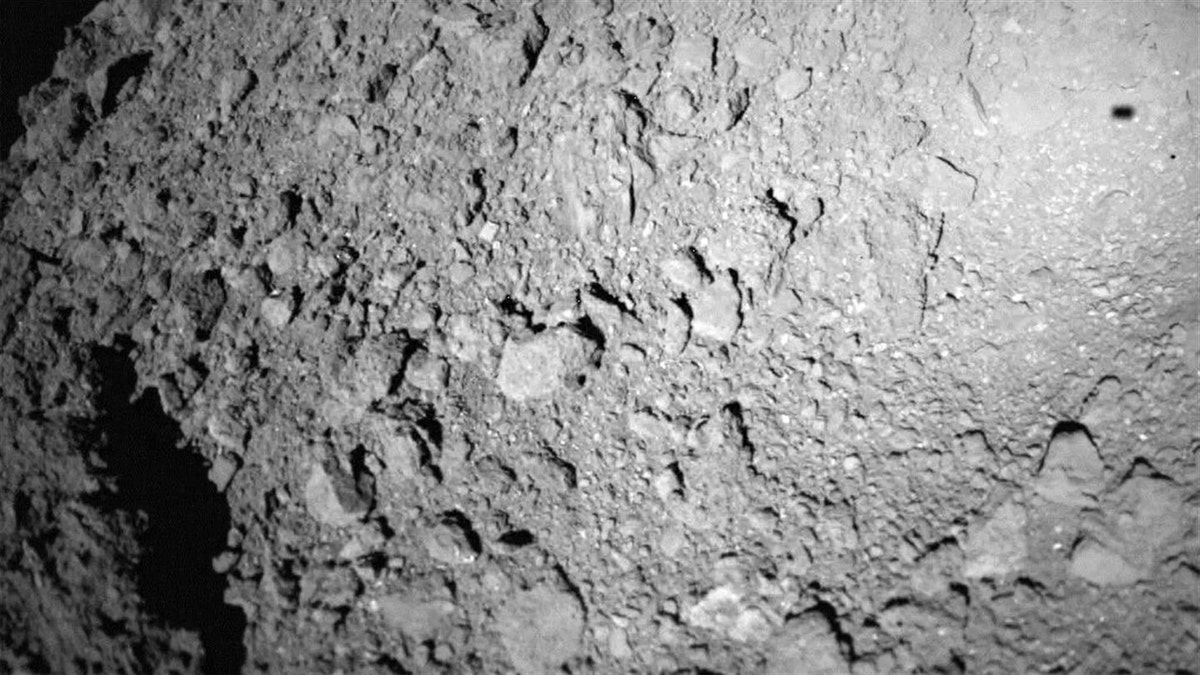
The German-French Mobile Asteroid Surface Scout (MASCOT) lander captured this photo of asteroid Ryugu during landing operations on Oct. 3, 2018. The lander's shadow is visible at upper right. Credit: German Aerospace Center (DLR)
A small Japanese probe landed an observation robot on the asteroid Ryugu Tuesday night in mission to study the solar system’s origins.
The box-shaped lander created by Germany and France’s space agencies is called MASCOT or Mobile Asteroid Surface Scout. It was launched from the Hayabusa2 probe and captured numerous photos of the asteroid located more than 186 million miles from Earth.
"The camera worked perfectly," said Ralf Jaumann, a planetary scientist with the German Aerospace Center (DLR) that built MASCOT, in a statement. "The team's first images of the camera are therefore safe."
STUNNING IMAGE FROM LOST SPACECRAFT REVEALS WHAT IT'S LIKE TO STAND ON A COMET
The landing comes less than two weeks after Hayabusa2 dropped a pair of MINERVA-II micro-rovers on Ryugu, marking the first time a robotic observation device successfully landed on an asteroid.
Since their landing, the rovers have gathered incredible images by “hopping” around the asteroid’s surface. These hops are a result of internal motors shifts and take about 15 minutes to complete because Ryugu does not have a strong gravitational force.
Unlike those rovers, MASCOT can turn on its side, but for the most part is immobile. It will only 'jump' once on its mission. And though the rovers will remain on the asteroid for months, MASCOT’s battery has a lifespan of 16 hours, and will transmit the data it collects to the Hayabusa2 before it loses power.
"With MASCOT, we have the unique opportunity to study the solar system's most primordial material directly on an asteroid," Jaumann said.
In addition to the landers, there is also more to come from the Hayabusa2. The spacecraft, operated by the Japanese Aerospace Exploration Agency, or JAXA, is scheduled to deploy an 'impactor' later this month that will explode above the asteroid, blasting a small crater on the surface.
Part of MASCOT's goal is to obtain information about where this crater should be created.
The Hayabusa2 mission, which costs around $260 million, will also collect samples of the asteroid and return them to Earth in December 2020. JAXA launched the Hayabusa2 mission in 2014.




















